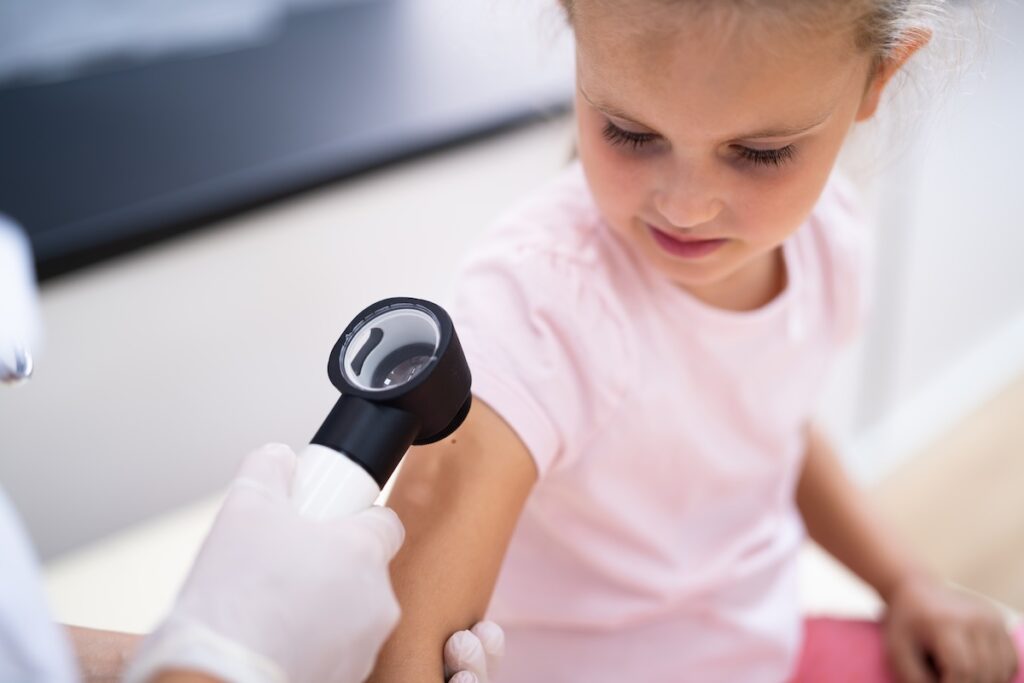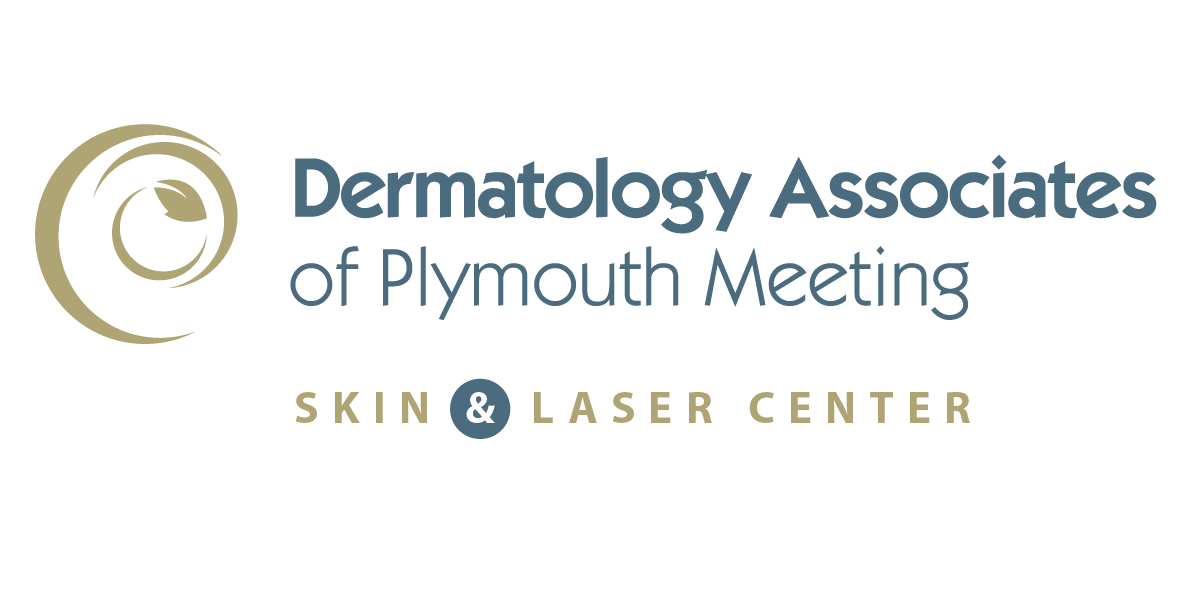A Parent’s Guide to Understanding and Treating Keratosis Pilaris

Keratosis pilaris (KP), often referred to as “chicken skin,” is a common condition that affects the skin’s texture, causing rough, tiny bumps on the surface. While it is harmless, it can be a source of concern for parents when it appears on their child’s skin, especially in visible areas like the arms, cheeks and thighs. Fortunately, there are safe and effective treatments available to manage this condition in children, ensuring their skin stays soft and healthy. At Dermatology Associates of Plymouth Meeting, our pediatric-friendly dermatology team can help tailor treatments to your child’s needs.
What is Keratosis Pilaris?
Keratosis pilaris is a benign skin condition caused by the buildup of keratin, a protein that protects the skin from infections. When too much keratin accumulates, it blocks the hair follicles, leading to the formation of small, rough bumps. These bumps are often mistaken for acne or goosebumps, but they are not painful or harmful. Common areas where KP appears include:
- Upper arms
- Thighs
- Buttocks
- Cheeks
KP is more prevalent during the colder months when the skin tends to dry out and can improve in warmer seasons when the humidity levels are higher. While the condition often starts in childhood, it may persist into adolescence or adulthood typically becoming less noticeable with age.
Causes and Risk Factors in Children
Although the exact cause of keratosis pilaris remains unclear, it is believed to result from genetic factors and is often seen in families. Children with dry skin or conditions such as eczema are more likely to develop KP. Other contributing factors include:
- Family history: If a parent or sibling has keratosis pilaris, a child is more likely to have it.
- Dry skin: The condition tends to worsen when the skin is dry, which is why it may flare up during winter.
- Sensitive skin conditions: Children with a history of eczema or atopic dermatitis may be more prone to developing KP.
Despite being common and harmless, KP can be aesthetically concerning for both children and parents, especially when it affects visible areas like the face. Fortunately, with the right approach, keratosis pilaris can be managed effectively without causing discomfort.
Pediatric-Friendly Treatment Options
While there is no permanent cure for keratosis pilaris, a variety of treatments can help improve the skin’s texture and reduce the appearance of bumps. It’s important to choose treatments that are gentle on a child’s skin yet effective in alleviating symptoms. Here are some of the most recommended pediatric-friendly treatments:
Gentle Exfoliation
Exfoliating the skin helps to remove dead skin cells that can clog hair follicles and lead to the formation of bumps. For children, it’s crucial to use gentle exfoliating products that do not irritate their delicate skin. Look for cleansers or scrubs that contain mild alpha-hydroxy acids (AHAs) or beta-hydroxy acids (BHAs). These acids work to dissolve the keratin buildup without harsh scrubbing.
Recommended Exfoliants for Children:
- Lactic acid: A gentle AHA that helps exfoliate and hydrate the skin simultaneously.
- Salicylic acid: A BHA that penetrates the pores to unclog them, effective for reducing KP.
Parents should ensure that any exfoliating products used on their child’s skin are specifically formulated for sensitive skin to avoid irritation.
Skin Moisturizers
Regularly moisturizing the skin is a key component of managing keratosis pilaris. Since dry skin can worsen KP, using a rich moisturizer that restores hydration can help soften the bumps and prevent flare-ups. For children, opt for moisturizers that contain ceramides, glycerin, or hyaluronic acid, all of which help retain moisture and improve the skin’s barrier function.
Recommended Moisturizers:
- Ceramide-based creams: Help to repair and protect the skin’s barrier, keeping it hydrated and reducing irritation.
- Urea-based emollients: While commonly used in adults, low concentrations can be safe for children when recommended by a dermatologist, as it helps to reduce keratin buildup.
Moisturizing should be done immediately after bathing while the skin is still damp, as this helps lock in moisture and enhance the effectiveness of the treatment.
Prescription Treatments
For more persistent cases of keratosis pilaris, a dermatologist may recommend prescription treatments. While these are generally considered for older children or adolescents, they can be effective in managing more severe symptoms.
Common Prescription Options:
- Topical retinoids: Derived from vitamin A, these products increase cell turnover, which can help to unclog hair follicles and smooth the skin.
- Mild corticosteroids: In cases where inflammation is present, a doctor may prescribe a mild corticosteroid cream to reduce redness and irritation.
At-Home Care and Lifestyle Adjustments
In addition to medical treatments, there are several at-home care tips that can help improve your child’s skin and manage keratosis pilaris:
- Use lukewarm water for baths: Hot water can strip the skin of natural oils, so it’s important to keep baths short and use lukewarm water.
- Choose gentle cleansers: Opt for mild, fragrance-free cleansers that do not further irritate the skin.
- Avoid rough fabrics: Dress your child in soft, breathable fabrics to minimize friction on the affected areas.
- Humidifiers in the home: Using a humidifier during colder months can help keep the air moist, preventing the skin from drying out.
These simple steps can make a big difference in managing the condition and preventing it from worsening.
When to Consult a Dermatologist
Although keratosis pilaris is generally not a cause for concern, there are cases where it’s advisable to consult one of our dermatologists, especially if over-the-counter treatments aren’t providing sufficient results. Our specialists will recommend safe, effective treatments that are specifically tailored to your child’s sensitive skin. If your child’s KP is causing significant irritation, or affecting their self-esteem due to its appearance, a consultation may be beneficial.
Signs You May Need a Dermatologist:
- Severe or persistent bumps that don’t respond to basic treatments
- Inflammation or discomfort
- Emotional distress related to the condition
At Dermatology Associates of Plymouth Meeting, our team is experienced in treating pediatric skin conditions, and we can guide you through the best options to ensure your child’s skin remains healthy and smooth.
Helping Your Child Achieve Healthier Skin
If your child is struggling with keratosis pilaris, you don’t have to manage it alone. At Dermatology Associates of Plymouth Meeting, our pediatric-friendly approach ensures your child receives the best care possible. We offer safe, effective treatments tailored to children’s skin, helping them feel comfortable and confident in their skin.
Contact us today to schedule an appointment and learn more about how we can help manage your child’s keratosis pilaris.
